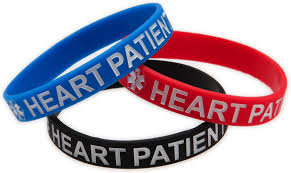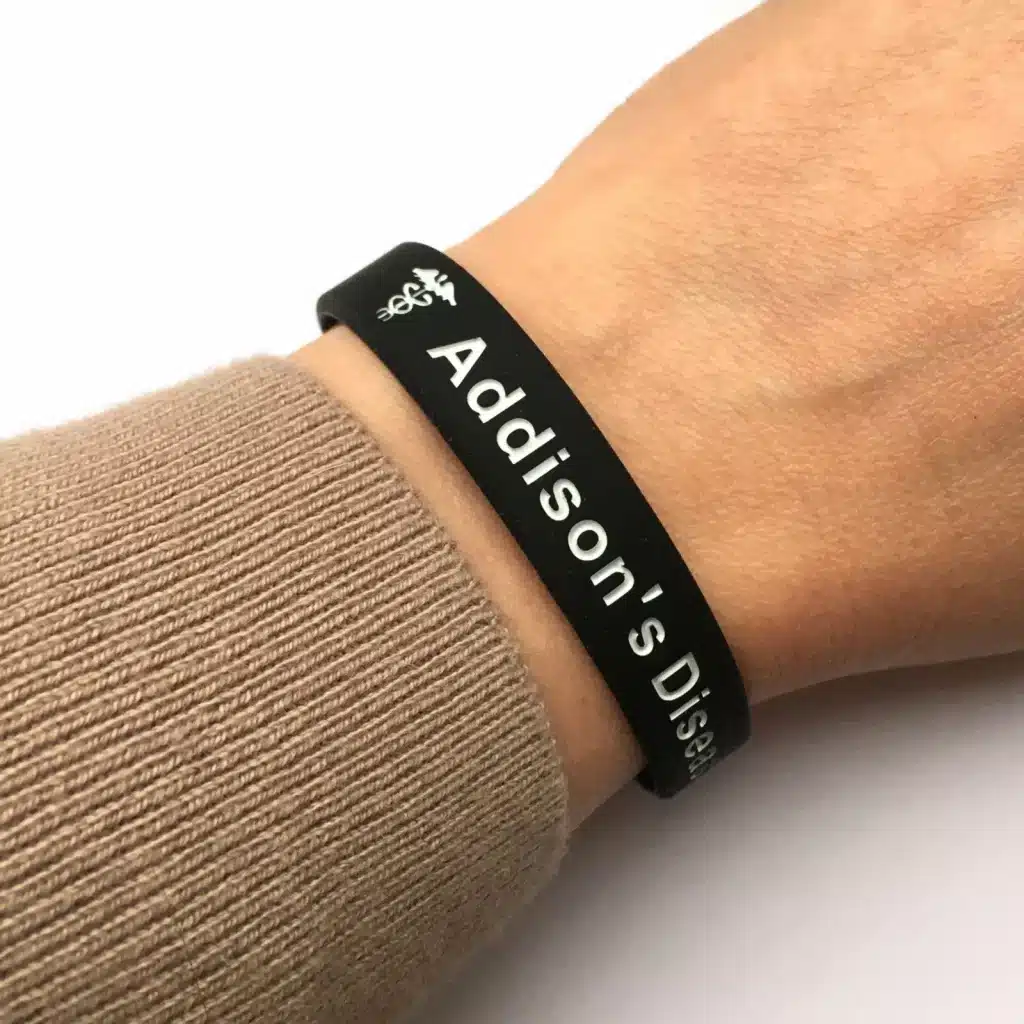Table of Contents

In the modern medical environment, ensuring the accuracy of patient information is an important part of the quality of medical services. With the advancement of science and technology and the continuous development of the medical industry, medical silicone wristbands, as an innovative patient identification tool, are gradually becoming an indispensable part of hospitals. This article will explore in depth how medical silicone wristbands can become a smart choice to ensure the accuracy of patient information, and analyze its advantages and applications from multiple aspects.
Basic Overview of Medical Silicone Wristbands
Medical silicone wristbands, as a special patient identification tool, are mainly made of silicone materials. Silicone materials have been widely used in the medical field because of their soft, durable, comfortable and non-toxic properties. Medical silicone wristbands are usually printed with basic information such as the patient’s name, age, gender, and hospitalization number. Some are also equipped with QR codes or RFID technology to read patient information more quickly and accurately.
Ensure the accuracy of patient information
Clear and legible information: The information on the medical silicone wristband uses wear-resistant and non-fading printing technology to ensure that the information remains clear and legible during the patient’s hospitalization. This greatly reduces the risk of medical errors caused by blurred or lost information.
Application of QR code and RFID technology: Many medical silicone wristbands are now equipped with QR codes or RFID chips, and medical staff can quickly and accurately obtain patient information by scanning QR codes or using RFID readers. This technology not only improves work efficiency, but also reduces the possibility of human error.
Update information in real time: Compared with traditional paper medical records, the information on Medical bracelets can be updated in real time more easily. When the patient’s treatment plan or medication needs change, medical staff can quickly make corresponding changes on the wristband to ensure that all relevant personnel have access to the latest patient information.

Advantages of medical silicone wristbands
Durability: Silicone materials have good durability and can resist wear and tear during daily use and cleaning. This means that Medical bracelets can be used continuously throughout the patient’s hospitalization without frequent replacement.
Comfort: Compared with traditional plastic or paper wristbands, silicone wristbands are softer and more comfortable, and less irritating to the skin. This is especially important for patients who need to wear wristbands for a long time, which can reduce the risk of skin discomfort and allergic reactions.
Waterproof: Silicone material has good waterproof properties, allowing medical bracelets to remain dry and clean during daily activities such as bathing and washing hands. This helps keep patient information clearly visible and reduces the possibility of bacterial growth.
Customized service: Medical silicone wristbands can be customized according to the needs of the hospital, including color, size, printed content, etc. This enables hospitals to provide personalized wristbands for different departments or patient groups, further improving the accuracy and efficiency of patient identification.
Environmental protection: Silicone material is recyclable, which means that medical bracelets can be more easily environmentally treated after use. Compared with traditional paper or plastic wristbands, silicone wristbands have less impact on the environment.
IV. Application of medical silicone wristbands in medical environments
Patient identification: Medical silicone wristbands are one of the main tools for patient identification. In various departments of the hospital, including the emergency room, operating room, inpatient department, etc., medical staff can quickly and accurately identify patients by scanning the QR code on the wristband or reading the RFID information.
Drug management: During the drug management process, medical silicone wristbands can help medical staff ensure that patients receive the correct medication. By scanning the information on the wristband, medical staff can verify the patient’s identity and medication needs to avoid medication errors or omissions.
Allergy warning: For patients who are allergic to specific drugs or treatments, medical silicone wristbands can serve as a clear allergy warning sign. The printed information on the wristband can remind medical staff to pay attention to the patient’s allergy history and ensure that appropriate precautions are taken when providing medical services.

Neonatal care: Medical silicone wristbands are particularly important in neonatal care. Newborns are usually unable to express their identity or needs, so the information on the wristband is crucial to ensure that they receive the correct care and treatment. In addition, the softness and comfort of silicone wristbands are also particularly suitable for the delicate skin of newborns.
Patient safety: Medical silicone wristbands also help improve patient safety. In emergency situations, medical staff can quickly obtain the patient’s medical history and current condition by scanning the information on the wristband, so as to make more accurate diagnosis and treatment decisions.
V. Conclusion
In summary, medical silicone wristbands, as an innovative patient identification tool, play an increasingly important role in modern medical environments. Its durability, comfort, waterproofness, and customized services make it a smart choice to ensure that patient information is accurate. By applying medical silicone wristbands, hospitals can improve the accuracy and efficiency of patient identification, reduce the risk of medical errors, and further improve the quality of medical services. With the continuous advancement of science and technology and the continuous development of the medical industry, we have reason to believe that medical silicone wristbands will play a wider and deeper role in the future.
Before concluding this article, I would like to emphasize that although medical silicone wristbands have many advantages and application value, its successful implementation still requires the joint efforts of hospitals and medical staff. Hospitals need to formulate relevant use and management policies to ensure the correct application and timely updating of medical silicone wristbands. Medical staff need to receive relevant training and education and be familiar with the use and precautions of wristbands. Only in this way can we make full use of the potential of medical silicone wristbands and provide patients with safer, more efficient and personalized medical services.